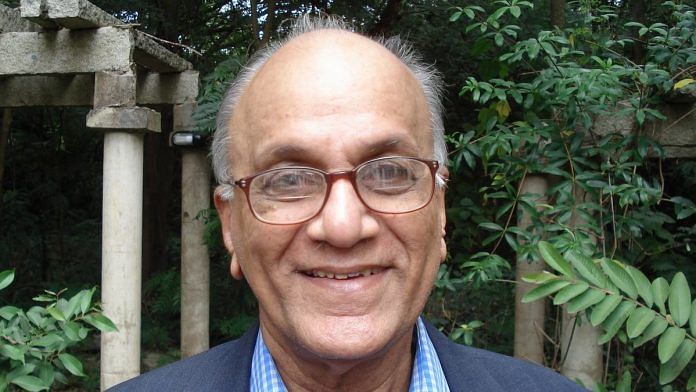Bengaluru: Padma Bhushan awardee and one of the world’s most eminent mathematicians, Conjeevaram Srirangachari Seshadri, passed away Friday. He was 88 years old.
C.S. Seshadri helped shape Mumbai’s Tata Institute of Fundamental Research (TIFR) School of Mathematics into a premier institute, and also founded the Chennai Mathematical Institute, where he remained Director-Emeritus until his death.
Seshadri was widely considered a leader in algebraic geometry — an area in which he continued to make breakthroughs throughout his life. His research on unitary vector bundles, the Narasimhan-Seshadri theorem, Geometric Invariant Theory, Schubert varieties, and the standard monomial theory, are considered to be some of the most influential work in the field. The Seshadri constant is named after him.
Seshadri’s passing was mourned widely on social media. K. VijayRaghavan, Principal Scientific Adviser to the government, described him as “Constantly curious, endearingly optimistic, deeply connected to our art and culture, while being a true internationalist; this is the loss of an intellectual giant whose feet were firmly planted in the vibrant and welcoming institute he built”.
Thread: The passing of Professor C. S. Seshadri is a great loss to mathematics in particular and to science and teaching in general. He was among those who built the TIFR School of Mathematics to global acclaim. 1/5 pic.twitter.com/qeB6I3VyUW
— Principal Scientific Adviser, Govt. of India (@PrinSciAdvGoI) July 18, 2020
Also read: How mathematics can be an anti-racist, feminist enterprise
Life and work
Seshadri grew up in Kancheepuram and was inspired by his uncle, who would regularly ask him to solve mathematical problems at home. In college, he credits Father Racine, his algebra professor, for having lit the spark in him.
Seshadri completed his bachelor’s degree from Madras University in 1953, and his Ph.D. from Bombay University in 1958, and went on to be chosen as a fellow at the Indian Academy of Sciences in 1971, and a foreign associate of the US National Academy of Sciences in 2010.
From 1953 to 1984, he worked in the School of Mathematics at TIFR in Bombay (now Mumbai), starting off as a research scholar, and going on to become a senior professor.
Subsequently, he worked in IMSc in Chennai, and then founded the Chennai Mathematical Institute. He was also a visiting professor at the University of Paris, Harvard University, UCLA, Brandeis University, University of Bonn and the Kyoto University.
Seshadri’s work has been instrumental to the study of moduli problems, geometric invariant theory and the representation theory of algebraic groups. He famously collaborated with fellow mathematician M.S. Narasimhan on vector bundles, which led to the Narasimhan-Seshadri theorem. He also made seminal contributions to geometric invariant theory and Schubert varieties, and also initiated a programme called standard monomial theory.
He called French mathematician Claude Chevalley his guru, for shaping his academic life when he was in Paris.
Seshadri was one of the first four Indians to speak at the International Congress of Mathematics in Nice, France, in 1970, along with M.S. Narasimhan, M.S. Raghunathan, and Raghavan Narasimhan.
Legacy
According to a profile of Seshadri by mathematician Vikraman Balaji, he was also an accomplished exponent of Carnatic music, and continued to “religiously do his musical sadhana”.
Among the awards he received are the H.K. Firodia Award for Excellence in Science and Technology, Pune, 2008, and the Rathindra Puraskar from Santiniketan’s Visva-Bharati University, 2008.
He was honoured with the Padma Bhushan by the President of India in 2009, as well the Shanti Swarup Bhatnagar Award, the Srinivasa Ramanujan Medal, and the TWAS Science Award.
He was a member of the US National Academy of Sciences, and a fellow of the American Mathematical Society, the Indian Academy of Sciences, the Indian National Science Academy, and the Royal Society.
Also read: World’s top statisticians are urging scientists to ditch statistics and stick to mathematics



